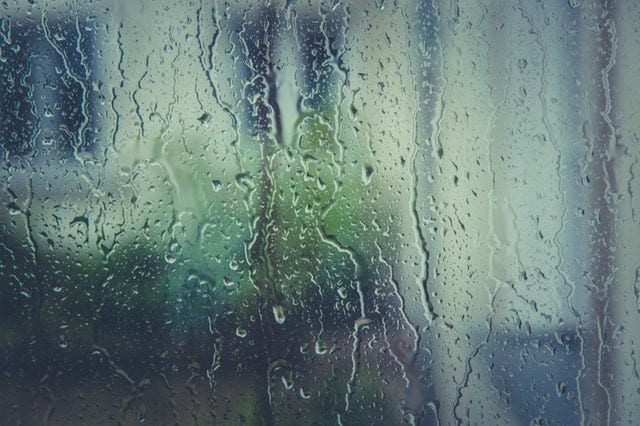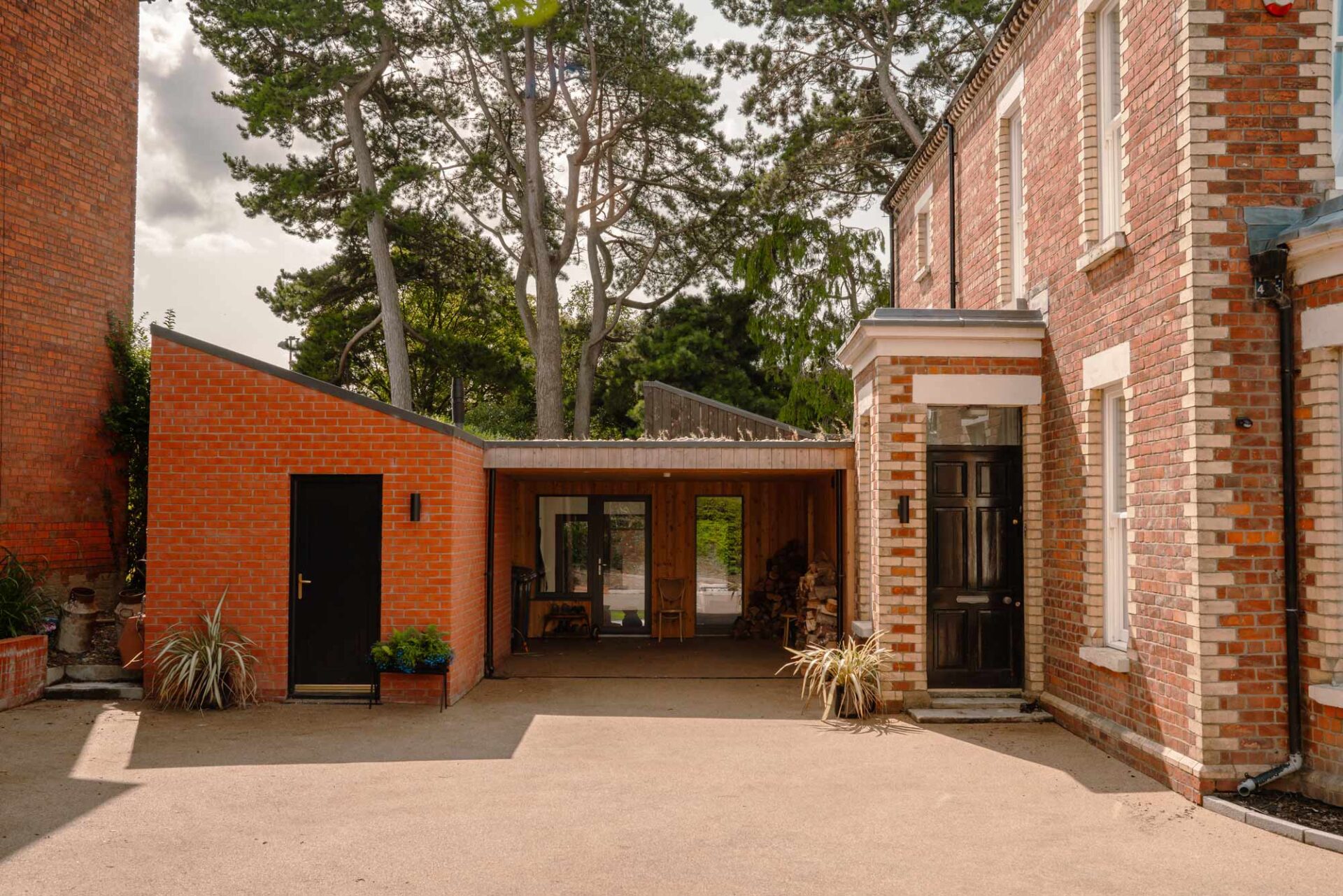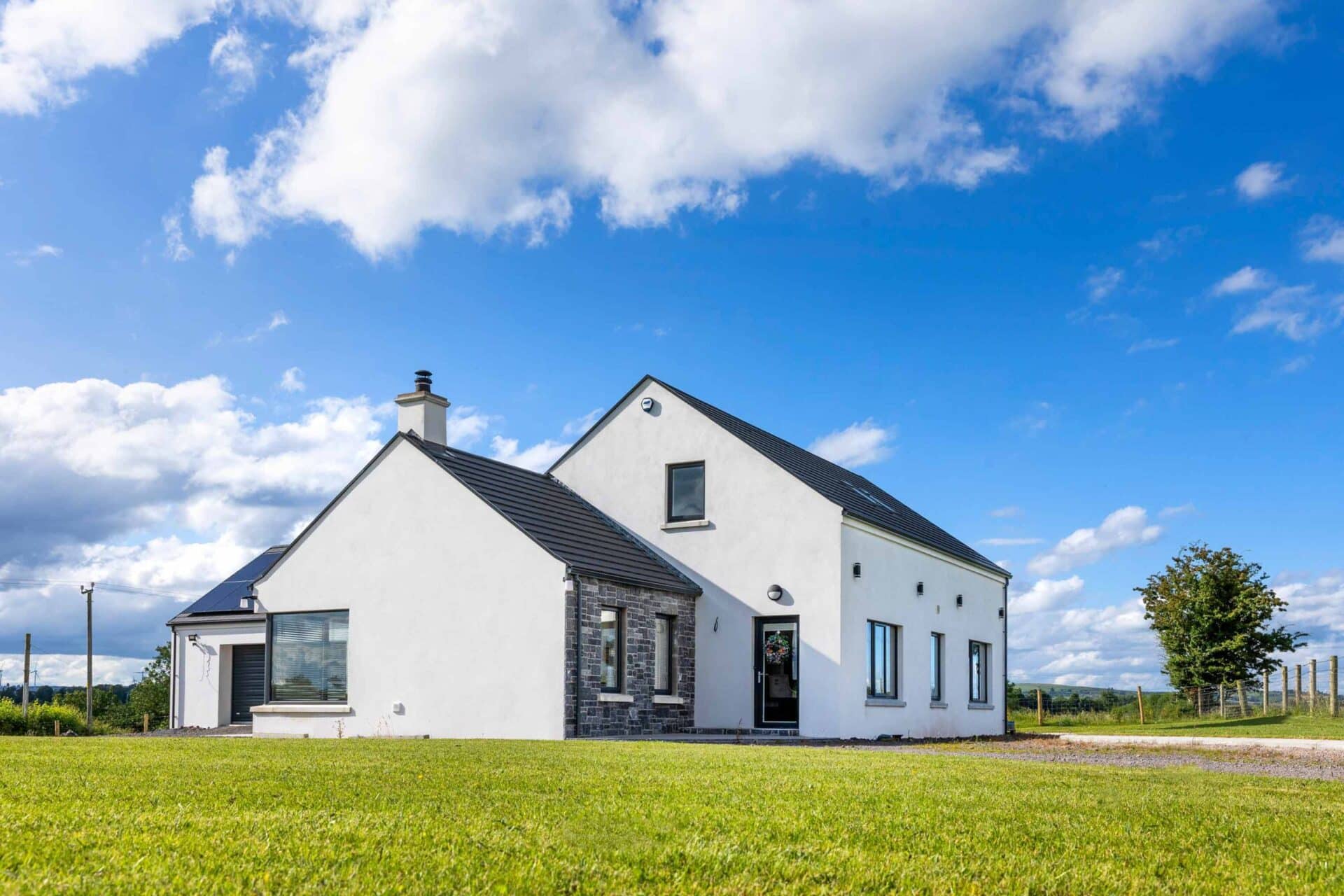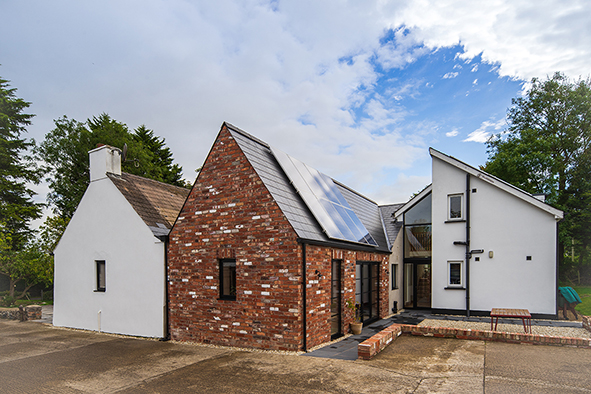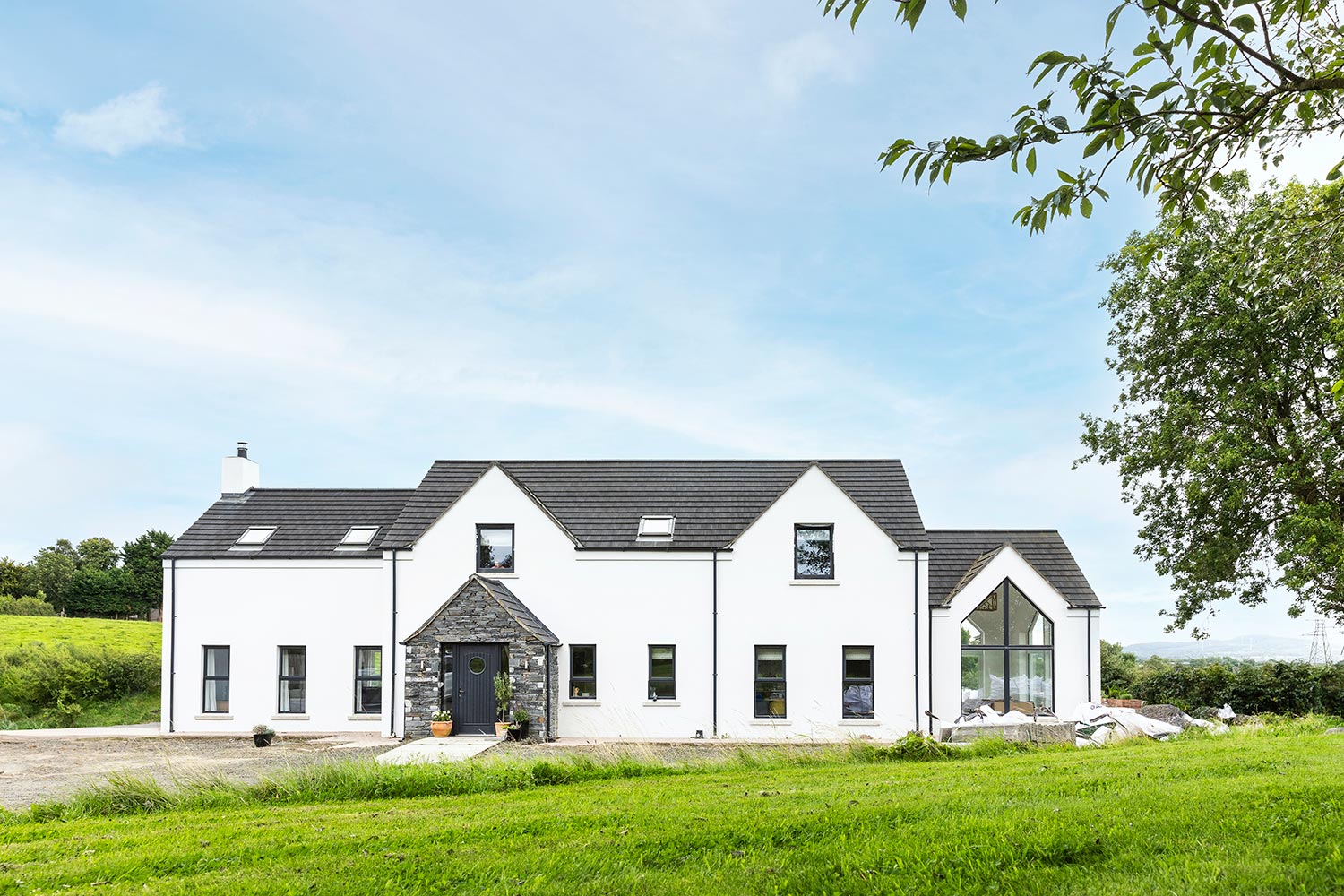- Ground and Surface Drainage: Surfaces butting up to the walls of your property should be angled slightly upwards so that rainwater drains away from the building or at least includes a rainwater channel to draw water away. If ground drainage is blocked, the property is at risk of flooding. (In the USA it is common to have the ground fall away from the house walls at a 10 degree tilt.) Note that pea shingles are better at reducing splash back on walls than hard surfaces. These are small round river or glacier worn gravel generally below 10mm in size. Water striking this type of surface gets dissipated into a lot of smaller splashes, rather than create a high splash back as is the case with concrete or smooth hard surfaces.
- Solid Damp-Proof Course: If dampness begins at ground level or below, a faulty DPC may be implicated – this may require invasive investigations, so should only be considered once all other sources have been eliminated. Check the perimeter of your property and be sure that adjoining decking and driveway surfaces do not carry water to a level higher than your DPC. Cavity wall insulation and subsidence are also capable of bridging the DPC. A solution is to replace it with a solid DPC, which is made of a layer of solid, waterproof material such as polythene. (Bituminous felt tends to get brittle; copper sheets are used as a retrofit solution in some countries but aren’t as common in Ireland.) Note that a solid DPC will be difficult to fit once the walls have been constructed.
- Chemical Damp-Proof Course: This involves injecting a silicone-based liquid into a series of holes drilled into the wall to create a water-repelling layer. Newer types of chemical damp proof course don’t require a large pump for installation as they are available as a ‘cream’ which is injected using either a small hand pump or a cartridge type mastic gun.
- Tanking System: This essentially works by drawing and tracking moisture to a single area in a room which is then pumped out. It doesn’t address the ventilation issue so must be used in conjunction with another method.
- Porous Tube: Small porous clay tubes are inserted into rows of closely spaced holes in the mortar, where they increase the rate of evaporation and therefore limit the amount of moisture that can rise above them. Note that these systems can clog over time with salts, which means that the rising damp problem may return if this occurs.
- Hollow Bricks: These are special bricks that fix to the outside wall of your house allowing dry air to flow in. They are designed to dry out walls and decrease the level of humidity within the house. The system is a permanent solution and can also help in eliminating, preventing and controlling damp regardless of its cause. Not all bricks work in the same way so talk to a remedial expert. The same problem as with porous tubes may arise.
- Electro-Osmotic Damp Proofing: When an electric charge is applied across a damp wall, the water molecules are drawn to the negative electrode rather than rising through the wall. The electrodes and wires are hidden beneath the mortar and connected to a power unit, which plugs into a standard 13amp socket. This maintains a tiny electric charge across the masonry, and of course the whole system must also be earthed. Note that this method is not considered to be fully proven.
- Mesh Membrane Sheet: The air-pocketed sheet is mostly fitted to the inside of damp exterior walls to allow them to breathe. They are then replastered/ drylined and finished as normal. To maximise the benefits of the product, it is recommended you use it in conjunction with other breathable materials, such as natural interior paints and lime wash exterior paints. Some systems use a mesh membrane which has also been approved for use in conservation projects because it doesn’t penetrate the building’s fabric.
- Paints & Coatings: Weather proof paints or coatings can help protect exterior walls from further water penetration. However, there is also the risk that they will block interior moisture from escaping! Check the product has natural and breathable properties to reduce this happening and ensure any internal finishes do not inhibit moisture movement.
Penetrating Damp
Any damp which comes through the outer walls or roof. The main causes of it are poor fitting or broken elements attached to the exterior of the house. Victorian red brick was particularly susceptible because of its permeability, which means that driving rain tended to penetrate it, causing moisture ingress creating damp patches where there was poor insulation, heating and ventilation.
Symptoms: Apart from staining, penetrating damp can severely damage brickwork and plaster, and is the main cause of wet rot in buildings. Water penetrating through brickwork will extract salts and leave a white deposit called efflorescence at the point of evaporation, while a leak will initially leave a tide mark, although it depends on where moisture is travelling from and how long the leak has been present (leaks can create efflorescence too over time). As the problem gets worse, further ring marks will appear.
Solutions: Removing the source of water is generally accepted as the main solution, while micro porous wall coatings can provide a breathable membrane that allows interior walls to dry out and also protect exterior walls from further moisture ingress. There are also silicone treatments that work in the same way without altering the render/finish.
- Leaking: Plumbing leaks most often occur at joints so check washers are working effectively on sanitary ware and that sealants and grouting are intact and continuous.
- Broken Guttering: Make sure rainwater is conducted safely away to drainage points.
- Masonry, Chimneys & Flashings: Check brickwork, render, stone and plinths for damage that compromise the waterproof surface. When a chimney is not in use and closed off from the bottom, rainfall can no longer be dried by the updraught coming from the fireplace. This is more of a problem with old chimneys which have no horizontal damp tray. The first signs of damp are often a yellow brown watermark on the wall of an upstairs room where the chimney breast is; this is the sulphur deposit from the inside of the chimney face leaching through the brickwork to the plaster. To prevent this and keep the wall dry, fit a ventilator towards the top of the original fireplace opening and a bird and rain proof cowl at the top. If a chimney has damaged internal brickwork and failed mortar lining, it can be re-lined to enable use.

